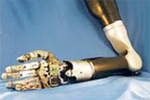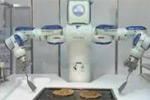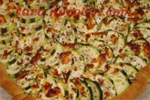Business |
|
Gospodarstvo |
How failure makes you a better leader

|
|
Kako vas neuspjeh čini boljim vođom

|
Computing |
|
Informatika |
The first human search engine

|
|
Prva ljudska tražilica

|
Technology |
|
Tehnologija |
Turning garbage into oil

|
|
Pretvaranje smeća u naftu

|
Mind-controlled robotic arm

|
|
Robotska ruka kojom se upravlja uz pomoć uma

|
The emergence of apps for electric cars

|
|
Pojava aplikacija za električne automobile

|
Robots can learn to perform complex tasks

|
|
Roboti mogu naučiti obavljati složene zadatke

|
Cuisine |
|
Kulinarstvo |
Courgettes with feta cheese and marjoram

|
|
Tikvice s feta sirom i mažuranom

|
Niçoise salad

|
|
Salata iz Nice

|
|
|
|
|

How failure makes you a better leader
Being young and fearless is fine, but thinking you’re impervious to disaster leaves a gaping hole in your experience.
Failure provides balance that makes you a stronger leader and a more capable manager.
Simply put, failure teaches you critical career lessons.
Here are three:
1) Failure is inevitable.
No individual, company, product, or anything, for that matter, goes straight up.
Why is it important to realize that?
Because, once you’ve been through it a few times, you don’t fear it as much, and that helps to make you more willing to take risks - very important in business.
2) Failure is good for relationships.
Nothing builds stronger relationships than failing, admitting it, and then demonstrating that you’re willing to go to extreme lengths to ensure that it doesn’t happen again.
This works between sales and customers, marketing and product development, virtually any business relationship.
But remember, it’s how you handle failure that counts.
If you don’t admit it, the whole concept falls apart.
3) Failure teaches you empathy.
Besides knowing it’s not the end of the world, failure teaches you empathy for others when they fail, and that in turn makes it easier for you to help your employees at all times...

|
|

Kako vas neuspjeh čini boljim vođom
U redu je biti mlad i neustrašiv, ali razmišljanje da ste otporni na katastrofu ostavlja veliku prazninu u vašem iskustvu.
Neuspjeh daje ravnotežu koja vas čini boljim vođom i sposobnijim vođom.
Jednostavno rečeno, neuspjeh vas uči kritičnim lekcijama u karijeri.
Ovdje su tri:
1) Neuspjeh je neizbježan.
Niti jedan pojedinac, tvrtka, proizvod ili bilo što, u stvari, ne kreće se ravno prema gore.
Zašto je to važno shvatiti?
Jer, nakon što ste to prošli nekoliko puta, ne bojite se više toliko, a to vam pomaže da budete spremniji na rizike - što je vrlo važno u poslovanju.
2) Neuspjeh je dobar za odnose.
Ništa ne gradi jače odnose od neuspjeha, njegovog priznavanja, a zatim dokazivanja da ste spremni ići do ekstremnih razina kako biste osigurali da se to više ne ponovi.
Ovo funkcionira između prodaje i kupaca, marketinga i razvoja proizvoda, praktički unutar svakog poslovnog odnosa.
Ali zapamtite, način na koji se nosite s neuspjehom je ono što je važno.
Ako ga ne priznate, cijeli koncept pada u vodu.
3) Neuspjeh vas uči empatiji.
Osim saznanja da to nije kraj svijeta, neuspjeh vas uči i empatiji prema drugima kad oni dožive neuspjeh, a zauzvrat vam čini lakšim da uvijek pomažete svojim zaposlenicima...

|
|
|
|
|

The first human search engine
ChaCha is a new search engine with real-time results from humans.
The site offers users two ways to search: traditional algorithmic results or help from live "guides".
Users interact with guides via an embedded instant messaging window in the search results page.
Brad Bostic, co-founder of ChaCha, said that the site had hired about 2500 guides at launch: college students, retirees, stay-at-home moms and others "who are online all day anyway".
But not just anyone can become a guide apparently - you have to be "sponsored" (invited by an existing guide) and work your way up a hierarchy consisting of four levels.
All this will likely bring out qualitative and opinion-based questions, which is also what's going on over at Yahoo Answers.
Fewer fact-based queries will likely be directed at guides because they are easier for people to answer on their own through conventional search...

|
|

Prva ljudska tražilica
ChaCha je nova tražilica s rezultatima u stvarnom vremenu proizvedenima od strane ljudi.
Stranica nudi korisnicima dva načina pretraživanja: rezultate pomoću tradicionalnog algoritma ili pomoću živih "vodiča".
Korisnici komuniciraju s vodičima putem ugrađenog sustava za izmjenu poruka u stvarnom vremenu unutar stranice s rezultatima pretraživanja.
Brad Bostic, suosnivač tražilice ChaCha, izjavio je kako je stranica zaposlila 2500 vodiča na samom početku: studente, umirovljenike, kućanice i druge "koji su ionako na internetu cijeli dan".
Ali izgleda da ne može bilo tko postati vodič - morate biti "sponzorirani" (pozvani od strane postojećeg vodiča) i napredovati prema gore kroz hijerarhiju koja se sastoji od četiri razine.
Sve će ovo vjerojatno rezultirati upitima koji su kvalitativni i utemeljeni na mišljenju, što se također događa i na stranici Yahoo Answers.
Vjerojatno je da će manji broj upita utemeljenih na činjenicama biti preusmjeren vodičima, jer je na njih ljudima lakše samostalno odgovoriti uz pomoć konvencionalnog pretraživanja...

|
|
|
|
|

Turning garbage into oil
The recipe for making crude oil is relatively simple: combine the remains of ferns, jellyfish, and dinosaurs; cover with sediment; bury deep in the earth's crust; and apply pressure for millions of years.
Or, if you're pressed for time, run some used turkey parts and tires through the thermal process owned by "Changing World Technologies" of West Hempstead.
The system uses water, pressure, and heat to convert organic material into clean fuel gas, absorbent carbon (like that used in water filters), minerals for fertilizer, and a crude oil that is chemically similar to a mixture of diesel fuel and gasoline; this oil can be sold to refineries and converted into fuel.
The only by-product is water.
In April 2003, the first commercial plant of this type opened in Carthage.
Every day, the plant handles 200 tons of unused turkey parts.
Such waste is now typically reprocessed into animal feed, but this practice may not be allowed much longer in the United States...

|
|

Pretvaranje smeća u naftu
Recept za proizvodnju sirove nafte relativno je jednostavan: pomiješajte ostatke paprati, meduza i dinosaura; pokrijte ih sedimentom; zakopajte ih duboko u Zemljinu koru; i primijenite na njih pritisak kroz milijune godina.
Ili, ako vam se žuri, propustite neiskorištene pureće dijelove i gume kroz toplinski proces tvrtke "Changing World Technologies" iz grada West Hempstead.
Sustav koristi vodu, pritisak i toplinu kako bi pretvorio organski materijal u čisto gorivo, upijajući ugljik (poput onog koji se koristi u filtrima za vodu), minerale za gnojiva ili sirovu naftu koja je kemijski nalik mješavini dizelskog goriva i benzina; ova se nafta može prodati rafinerijama i pretvoriti u gorivo.
Jedini nusproizvod je voda.
U travnju 2003. godine, prvo komercijalno postrojenje ovog tipa otvoreno je u Kartagi.
Svakog dana postrojenje obradi 200 tona neiskorištenih purećih dijelova.
Takav otpad se trenutno najčešće prerađuje u hranu za životinje, ali ova praksa možda još neće dugo biti dozvoljena u SAD-u...

|

Mind-controlled robotic arm
Robotic limbs controlled solely by the mind could be available to paralysed people within a year.
Monkeys are currently being trained to control what might be the world's most sophisticated and human-like robot arm.
But they never touch the prosthetic limb or fiddle with a remote control: they guide it with their thoughts alone.
If trials are successful, in a few months from now people with spinal cord injuries could learn to do the same.
Enter the Modular Prosthetic Limb (MPL), a bionic limb that closely approximates the form and agility of a human arm and hand.
The MPL is made from a combination of lightweight carbon fibre and high-strength alloys.
It has 22 degrees of freedom, compared with the human arm's 30, and can grasp precisely and firmly without crushing fragile objects.
The wrist and elbow rotate with ease and, like an average human limb, it weighs just under 4.5 kilograms...

|
|

Robotska ruka kojom se upravlja uz pomoć uma
Unutar godine dana, paraliziranim bi osobama mogli postati dostupni robotski udovi kojima se upravlja isključivo uz pomoć uma.
Za upravljanje vjerojatno najsofisticiranijom i ljudima najsličnijom robotskom rukom na svijetu trenutačno se obučavaju majmuni.
Ali oni nikada ne dodiruju prostetički ud niti nespretno barataju daljinskim upravljačem: njime upravljaju samo uz pomoć svojih misli.
Ako ispitivanja budu uspješna, za nekoliko bi mjeseci ljudi s ozljedama leđne moždine mogli naučiti raditi istu stvar.
Upoznajte Modularni prostetički ud (MPL - Modular Prosthetic Limb), bionički ud koji je vrlo blizu oblika i agilnosti ruke i dlana kod čovjeka.
MPL je izrađen od kombinacije laganih karbonskih vlakana i legura visoke čvrstoće.
Posjeduje 22 stupnja slobode, u usporedbi s 30 stupnjeva koje posjeduje ljudska ruka, te može precizno i čvrsto hvatati krhke predmete bez da ih zdrobi.
Zglob i lakat rotiraju s lakoćom, a ovaj ud, kao i kod prosječnog čovjeka, teži nešto manje od 4,5 kilograma...

|

The emergence of apps for electric cars
Minutes after taking the wheel of Nissan's Leaf car, I suddenly understood what "range anxiety" is all about.
It was scary for me watching the car's travel range drop on the electronic dashboard.
It set mental alarm bells ringing about whether or not I'd make it to my destination.
Starting out with a range of 144 kilometres, the figure instantly dropped to 112 km when I switched the air conditioning on - and driving fast on the highway dropped it even further.
Switching off the air conditioning and driving in a sluggish "eco mode" to make the most of regenerative braking system restored my range a little.
But it is clear that electric vehicle (EV) drivers are going to need as much help as they can get managing range anxiety - at least until lithium-ion batteries become much more powerful, and charging posts become as common as street lamps.
Neither is likely any time soon.
But a number of smartphone apps will communicate with your car, helping you squeeze the most range from your EV - from charging it remotely to pre-warming your seat on a cold morning...

|
|

Pojava aplikacija za električne automobile
Nekoliko minuta nakon što sam preuzeo upravljač Nissanovog automobila Leaf, iznenada sam shvatio što znači "zabrinutost zbog dometa".
Bilo mi je zastrašujuće gledati kako na elektroničkoj ploči s instrumentima pada domet automobila.
Upalilo mi se mentalno zvono za uzbunu oko toga hoću li ili neću stići na svoje odredište.
Počevši s dometom od 144 km, brojka je odmah pala na 112 km kada sam uključio klima uređaj - a brza vožnja na autocesti smanjila je tu brojku još i više.
Isključivanje klima uređaja i vožnja u sporom "eko načinu" kako bih maksimalno iskoristio regenerativni sustav kočenja malo su povećali domet.
No, jasno je da će vozači električnih vozila (EV) trebati svu moguću pomoć kako bi se nosili sa zabrinutošću zbog dometa - barem dok litij-ionske baterije ne postanu mnogo snažnije, a stanice za punjenje postanu uobičajene poput uličnih svjetiljki.
Niti jedno od toga nije vjerojatno u skorije vrijeme.
No brojne će aplikacije za pametne telefone komunicirati s vašim automobilom, te će vam pomoći da izvučete maksimalni domet iz vašeg električnog vozila - od daljinskog punjenja do prethodnog zagrijavanja sjedala u hladno jutro...

|

Robots can learn to perform complex tasks
Two robots named Rosie and James are making pancakes.
It's a tough task that requires coordination and planning.
Rosie slides the spatula under the half-cooked pancake, lifts the pancake from the heat and carefully flips it over.
The crowd cheers.
Rosie and James aren't quite perfect cooks they appear to be, however.
As far as robots go, they are flexible, but their complex routine is the result of painstakingly crafted software instructions.
Give Rosie and James a different recipe, for example, and their performance would suffer.
It's an age-old problem in robotics, but one that might have a solution.
Roboticists are now turning to the crowd for help in giving robots more general skills.
By allowing people to pilot real or simulated robots over the internet in trial experiments, they hope to recreate the fast and flexible behaviour that comes effortlessly to humans.
"This is a really viable path toward getting robots to do things that are useful for people," says Chad Jenkins, a robotics researcher...

|
|

Roboti mogu naučiti obavljati složene zadatke
Dva robota po imenu Rosie i James rade palačinke.
To je težak zadatak za koji su potrebni koordinacija i planiranje.
Rosie gura lopaticu ispod napola pečene palačinke, podiže palačinku s vatre i pažljivo je prekreće.
Publika kliče.
Međutim, Rosie i James nisu sasvim savršeni kuhari kakvima se čine.
Što se tiče robota, oni su fleksibilni, ali je njihova kompleksna rutina rezultat pomno izrađenih programskih instrukcija.
Dajte Rosie i Jamesu drugačiji recept, na primjer, i njihov nastup neće biti dobar.
Ovo je već prastari problem u robotici, ali za njega bi moglo postojati rješenje.
Robotičari se sada okreću publici za pomoć kako bi robotima omogućili više općenite vještine.
Dopuštajući ljudima da upravljaju stvarnim ili simuliranim robotima preko interneta u pokusima, nadaju se kako će ponovo stvoriti brzo i fleksibilno ponašanje do kojeg kod ljudi dolazi bez napora.
"Ovo je stvarno dobar put prema postignuću da roboti rade stvari koje su ljudima korisne", kaže Chad Jenkins, istraživač robotike...

|
|
|
|
|

Courgettes with feta cheese and marjoram
Very small courgettes, no thicker than your little finger, are best for this.
Mint is an acceptable substitute for marjoram.
Do not refrigerate this meal after cooking.
Serves six.
Ingredients
500g very small courgettes
2 tbs virgin olive oil
1 clove garlic, finely chopped
1 dsp chopped marjoram
The juice of half a lemon
100g feta cheese
Method
Wash the courgettes thoroughly before trimming the tops and tails at a slight angle.
Cut them diagonally into 1cm-long slices.
Heat a large frying pan with the olive oil and add the courgettes.
Season them with a little sea salt and, keeping them on the highest possible heat, toss and turn the courgettes for five or six minutes until they start to brown.
As soon as they are hot all the way through - this happens very quickly with courgettes - they will be cooked enough...

|
|

Tikvice s feta sirom i mažuranom
Za ovo su najbolje vrlo male tikvice, ne deblje od malog prsta.
Metvica je prihvatljiva zamjena za mažuran.
Ne stavljajte ovo jelo u frižider nakon kuhanja.
Za šest osoba.
Sastojci
500 g vrlo malih tikvica
2 žlice djevičanskog maslinovog ulja
1 češanj češnjaka, sitno nasjeckanog
1 žličica sjeckanog mažurana
Sok pola limuna
100 g feta sira
Način pripreme
Temeljito operite tikvice prije nego što im skratite gornji i donji dio pod blagim kutom.
Izrežite ih dijagonalno na kriške duge 1 cm.
Zagrijte maslinovo ulje u velikoj tavi za pečenje i dodajte tikvice.
Začinite ih s malo morske soli, te ih, držeći ih na najvećoj mogućoj vatri, okrećite oko pet ili šest minuta dok ne počnu poprimati smeđu boju.
Čim postanu potpuno vruće - a kod tikvica se ovo događa vrlo brzo - dovoljno su pečene...

|

Niçoise salad
Deep red, sweet and fragrant tomatoes are an absolute must.
The salad can be prepared up to an hour ahead; it should be turned very thoroughly before being served.
Ingredients
6 tomatoes
6 eggs
1 clove garlic
Red wine vinegar
1/2 cucumber
1 red pepper
4 spring onions
10 radishes
16 anchovy fillets
10 leaves of basil
20 black olives
1 dsp capers
Olive oil
Method
Remove the cores from the tomatoes and plunge into boiling water for 15 seconds.
Then drop into iced water until cold before removing the skins.
Drop the eggs into boiling water and cook for eight minutes and then plunge into cold water.
Shell the eggs.
Split the garlic in half and rub the exposed part over the base of a large plate or bowl.
Slice the tomatoes thickly and arrange in overlapping circles on the plate.
Sprinkle them with a little salt and a drop or two of red wine vinegar on each.
Slice the eggs and arrange on top of the tomatoes, leaving a border so that the tomatoes are clearly visible...

|
|

Salata iz Nice
Duboko crvene, slatke i mirisne rajčice apsolutno su nužne.
Salata se može pripremiti do sat vremena unaprijed; potrebno ju je vrlo dobro promiješati prije posluživanja.
Sastojci
6 rajčica
6 jaja
1 češanj češnjaka
Ocat od crnog vina
1/2 krastavca
1 crvena paprika
4 mlada luka
10 rotkvica
16 fileta inćuna
10 listova bosiljka
20 crnih maslina
1 žličica kapara
Maslinovo ulje
Način pripreme
Uklonite jezgre iz rajčica i uronite ih u kipuću vodu na 15 sekundi.
Zatim ih ubacite u ledenu vodu da se ohlade prije nego što im uklonite kožu.
Ubacite jaja u kipuću vodu i kuhajte ih osam minuta, a zatim ih uronite u hladnu vodu.
Ogulite ljuske s jaja.
Prerežite češnjak na pola i utrljajte njegovim izloženim dijelom dno velikog tanjura ili zdjele.
Debelo narežite rajčice i posložite ih na tanjur u formaciji krugova koji se preklapaju.
Pospite ih s malo soli i na svaku od njih dodajte kap ili dvije octa od crnog vina.
Narežite jaja i složite ih preko rajčica, ostavljajući pritom rub tako da rajčice budu jasno vidljive...

|
|
|
